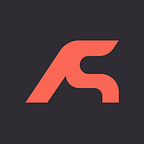Case Study: Rebranding LINK Into a TikTok Content Factory
About The Client
Created by two childhood friends from Portugal, Link works with influencers, content creators, and commercial brands on TikTok to provide a content creation service for the platform. As a TikTok content factory, Link focuses on driving exposure to a brand by working with top producers, creating a beat or jingle for a brand, promoting that beat like a record label would, and incentivizing creators to make user-generated content with that sound. They’ve generated 1.3 billion impressions over the last year by creating entertaining content and empowering individual creators on the platform.
Amplified had already worked with Link, and they were one of our first clients: we created an app for the first iteration of their idea and helped them launch. However, as the platform evolved, Link decided to pivot towards an agency model, and for this, they needed a rebranding and a new website. Amplified took on the challenge.
Getting Started
Initially, Link’s co-founders knew about Amplified through our CEO, who attended Stanford Business School with one of them. After looking at Amplified and other companies, they chose Amplified, drawn in by our agile model and our discovery-first process. They were excited by our desire to understand their business and their brand deeply. When it came to this most recent collaboration, we knew them and their business well, which simplified the process. With the rebranding, however, we had to understand their new vision for Link.
Our Process
Understanding The Vision
Our routine discovery call with Link was easy: our previous relationship with them and their clear vision of the rebranding made it a productive conversation. Nevertheless, they explained the new direction, and it was still a lengthy process of distilling the brand and interviewing everyone, including clients, to get a full picture.
We started by creating mood boards based on our discovery call and brainstorming session. We had already designed their logo, so we jumped straight into some color mapping, defined the new brand itself, then created designs for their homepage and website.
“It was a continuously iterative process,” Francisco said. We had weekly calls where we presented our progress and they gave feedback on the direction, and the designs evolved week over week. “They were open to suggestions, easy to work with, and great at taking feedback.”
Eventually, we presented new colors, typography, and aesthetics, created animations, and put together a website that pulled it all together.
Aesthetic
Link knew they wanted an edgy Gen Z feel for their new brand, so their target audience could relate to it. However, they also wanted to maintain professionalism and present themselves as a serious agency. Upon researching Gen Z, we found they enjoyed retro styles and color schemes. We started exploring many decades, starting from the 1950s and ended up using aesthetics from the 80s, with bright colors and funky visuals.
The designers developed the idea to incorporate the concept of machinery and manufacturing since Link was branding itself as a content “factory.” We explored Soviet-era imagery of manufacturing from the 1950s through the end of the Cold War. Taking inspiration from there, we combined manufacturing images with the colorful, edgy style of the 1980s.
To bring movement and the feeling of a “factory” to the website, we created animations that begin at the top of the homepage and continue down throughout the page as the copy explains Link’s process. These animations not only created a flow in the homepage and led and engaged the user through the process, but also showed off their new brand perfectly.
Tagline
Link’s tagline is “manufacturing magic.” The phrase is simple, but the alliteration makes it catchy. As their brand manual says, “It plays off of the image of the factory with ‘manufacture’; meanwhile, ‘magic’ shows that Link is not stuffy or old-fashioned like other agencies, but instead creates campaigns that truly captivate consumers.” Again, this tagline combined the factory concept with the fun and bright feel of the 1980s.
Colors
For Link’s colors, we chose a combination of two basics, black and white, and two bright and youthful colors: Mulberry pink and Capry blue. The neutrals set a foundation that feels edgy and sharp, while the colors, used in gradients, give off that retro feel without being too overwhelming. We opted not to go for neon colors as well, to keep the look more professional.
Typography
Link’s typography is bold but straightforward, highlighting their forward-thinking vision and professional attitude. The heading font, TS Block, is very wide-set and eye-catching, imposing but not overly embellished. Pragmatica, the body font, is simple and easy to read, so users are never too distracted to understand the copy.
Website
Link wanted their website to be a business card, but it had to be more than a simple landing page. We wanted something more advanced, dynamic, and creative. We also had to target not only Gen Z but also millennials that are in positions of power and balance the tone for both audiences. We realized we weren’t talking to a CEO, but to a marketing specialist, a creator who understands the cultural context. We had to combine fun with serious, youthful with professional.
Above the fold, we made it very clear what Link is, what it does, and even where it is, with images of Los Angeles to the right.
As the animation led users down the page, we explained the process of working with Link and highlighted their agency model. Finally, a call-to-action made it easy for Link to recognize whether the user was a creator or a brand.
Ultimately, we succeeded in creating a brand that expressed Link’s co-founders’ vision to users and clients. “The end result certainly matched expectations,” Francisco expressed.
